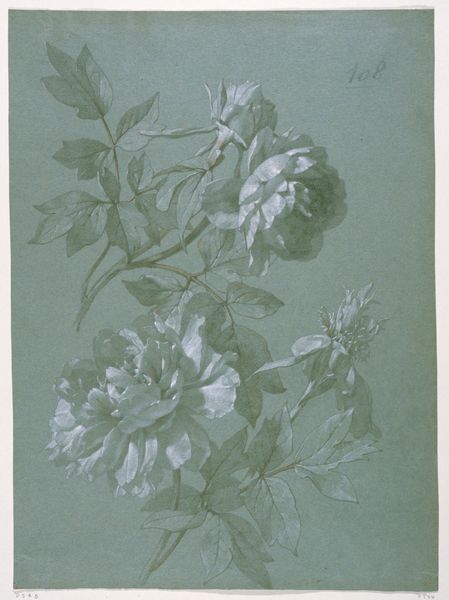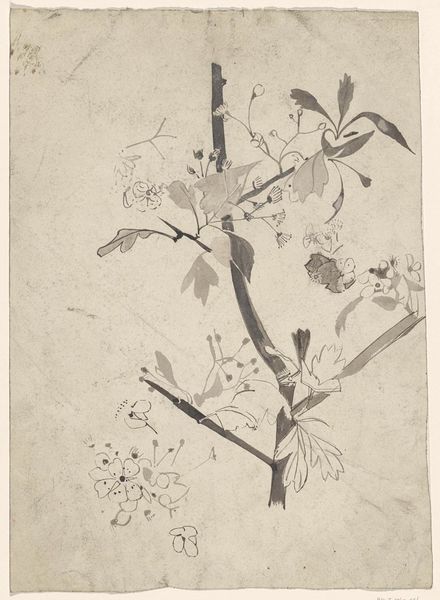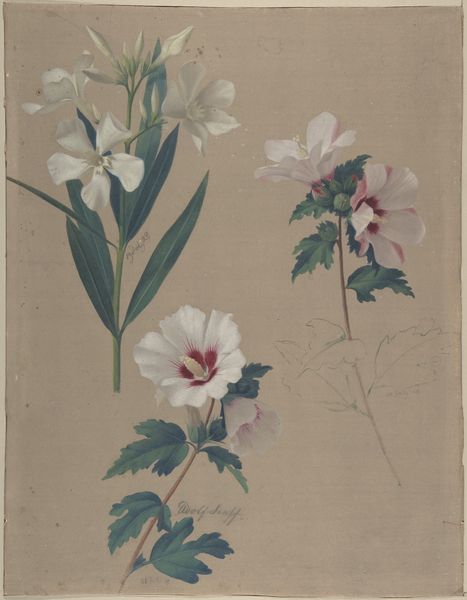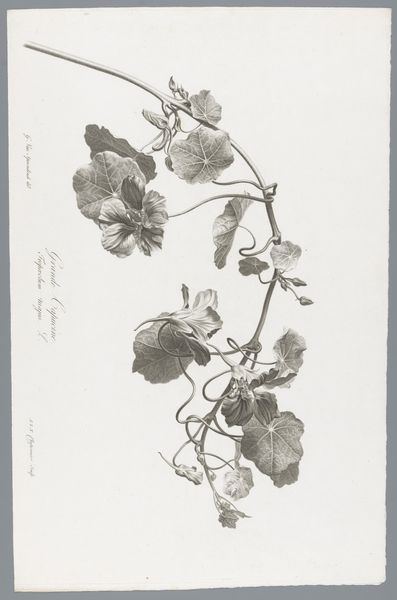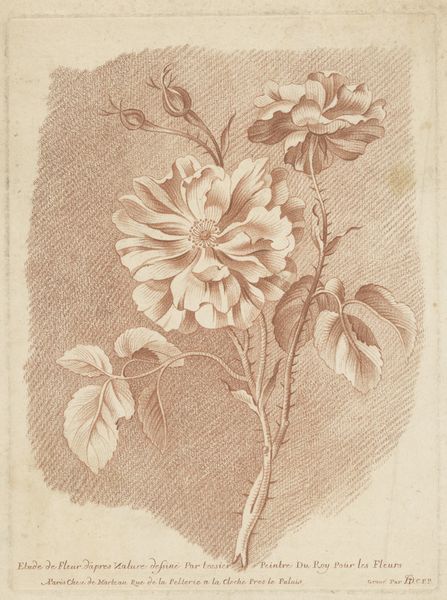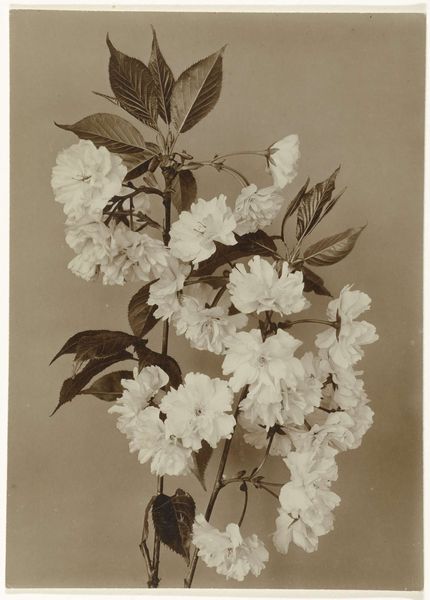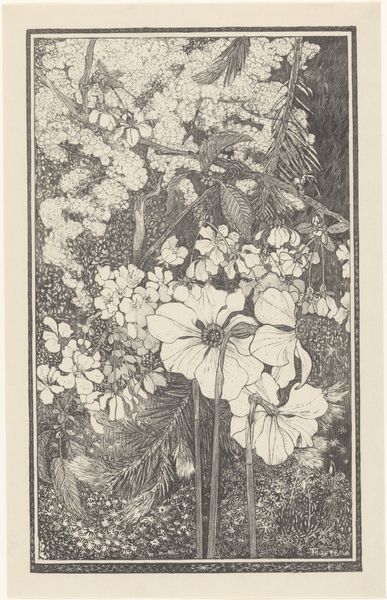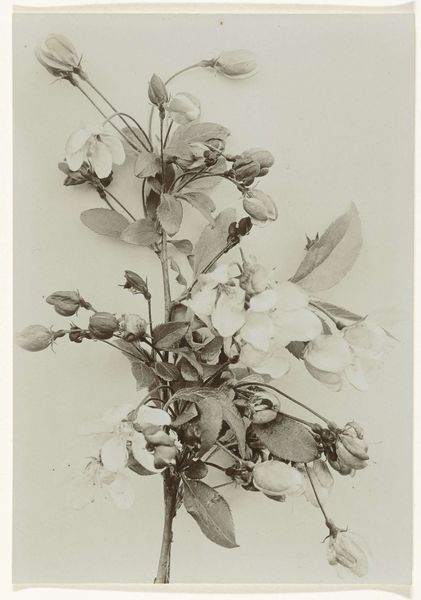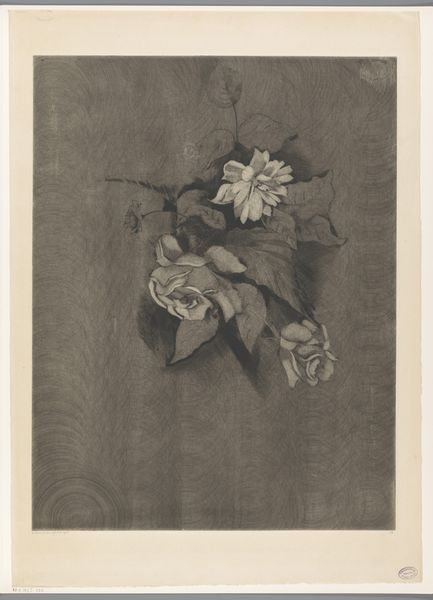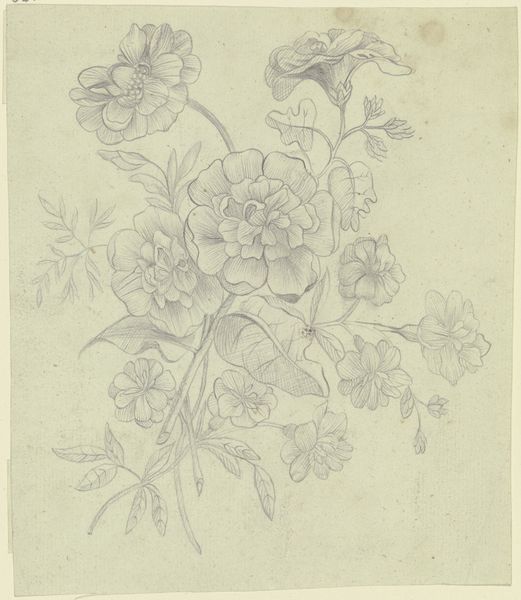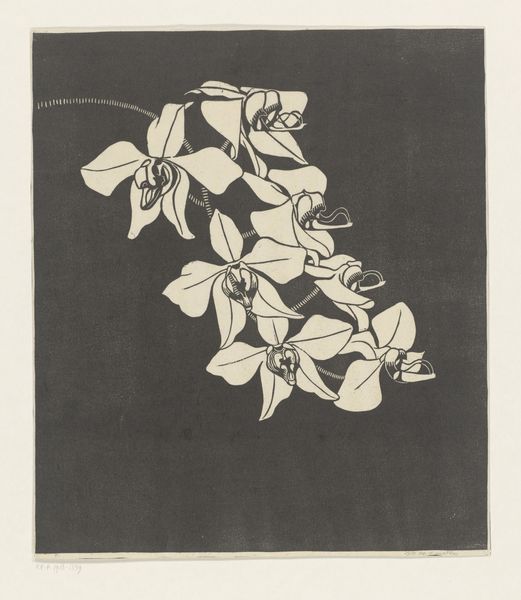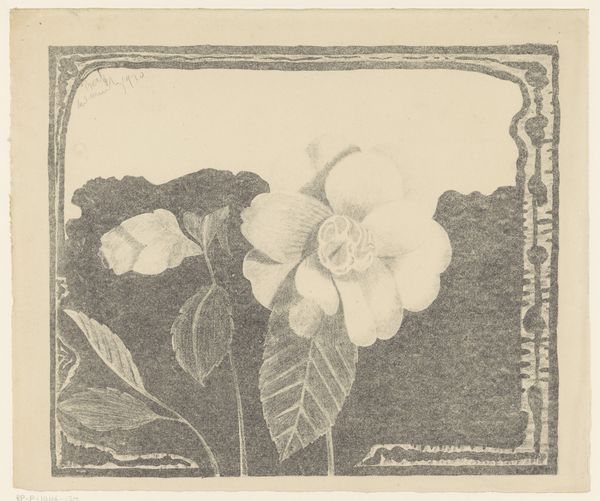
drawing, pencil
#
drawing
#
pencil
#
botanical drawing
#
botanical art
#
realism
Dimensions: 19 7/8 x 14 1/2 in. (50.48 x 36.83 cm) (image)
Copyright: Public Domain
Curator: We're looking at a drawing of a "Geranium (Pelargonium sp.)" dating back to around 1800. The drawing is rendered in pencil and is held in the collection of the Minneapolis Institute of Art. Editor: Immediately, I’m struck by the sheer delicacy and restraint in this image. There’s an almost ghostly quality to the shading; it’s both precise and soft. Curator: That resonates. These botanical studies were often instruments of scientific inquiry and colonial projects, attempts to document and classify the natural world, laying claim to botanical knowledge that was often extracted from colonized lands and Indigenous populations. The flower becomes almost an object of scrutiny. Editor: Interesting. Focusing on the physical creation itself, the process of building up the tones with pencil is labour-intensive, demanding patience and keen observation. It shows a clear understanding of how light interacts with these delicate forms. Curator: Absolutely. This realism isn't just aesthetic, it's about control over information. Consider how important accurate depictions of plants were for identifying medicinal properties or agricultural potential, further intertwining knowledge and power structures within these communities. The image, made in the early 1800s, embodies the politics enmeshed within the act of representation, framing how perceptions shape control, and how this detailed drawing may signal ownership of resources. Editor: I am struck by how the stark simplicity emphasizes the pure, unadorned elements: paper and pencil to show nature and craft. The absence of vibrant color draws our focus instead on textures and the gradations of grey. Curator: Yet this supposed objectivity veils an entire world. These objects were inherently shaped by and implicated in complex systems of production, trade, and colonial power. We have to consider the societal context intertwined with these kinds of depictions. Editor: I agree, that broader history shapes our reading, and so noticing the artistic skill as connected to these social dynamics makes looking closely at materials really important. We see the artistry more richly for that wider, systemic view. Curator: By thinking about the labor, the botanical exploration, and the cultural norms, we can gain insight, rather than seeing just a flower drawing. Editor: And, I appreciate that the restraint used in making and the precision gives an immediacy to our observation of the plant that might otherwise go unnoticed.
Comments
No comments
Be the first to comment and join the conversation on the ultimate creative platform.
